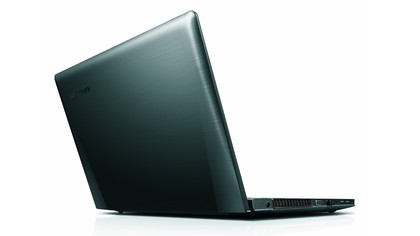Why you can trust TechRadar
- Cinebench 10: 21,930 (5807 single CPU)
- 3DMark 06: 13,863
- Battery Eater 05: 91 minutes, 38 seconds
- Boot Time: 15.4 seconds
- Call of Duty 4: 160fps
Given the hardware specifications detailed above, we expected the Y500 to output some impressive performance numbers. We weren't disappointed - this system is fast enough that it successfully competes with laptops that cost a lot more.

How fast are we talking? Let's put it this way: In all of our tests, the Lenovo Y500 came out on top of Razer's premium Razer Blade gaming system, which costs $1,250 (£825) more.
To be fair to Razer, the Blade can claim a screen that's two inches bigger, as well as an innovative touchpad that functions as a fairly full-fledged second screen. And despite all this, the Razer Blade somehow weighs only a wee bit more than this laptop…and is a half-inch thinner.
None of this takes anything away from the favorable benchmark numbers Lenovo achieves threw down in our tests. Lenovo's system's designers clearly made some smart component decisions to arrive at this level of power at such a low price.
In our Cinebench 10 test, which completely saturates all existing CPU cores/threads, the Y500 achieved a remarkable score of 21,930 thanks to the Core i7's high clock speed of 2.4GHz and the existence of 4 cores and eight threads. No big shock here, given that this is one of Intel's newest Ivy Bridge processors.
By way of comparison, the Razer Blade put up a 20,026 score, and Toshiba's Qosmio X870 (reviewed last summer at $1,899 / £1,250) put up a score of 21,197.
We experienced similar results in in our graphics tests. The tandem GeForce GT 650M graphics cards in SLI allowed this system to cut through our gaming tests like a hot knife through a stick of butter. While this performance is not depicted in the 3DMark 06 test because of 3DMark's trouble benching SLI configurations, the Y500's single-adapter mark of 13,863 puts it pretty much neck and neck with other high-end gaming laptops.
Sign up for breaking news, reviews, opinion, top tech deals, and more.
Given this, it's no shock that in terms of less controlled, real-world testing, the presence of the second graphics adapter makes one heck of a difference. In our default Call of Duty 4 Modern Warfare test, we saw benchmarks in the 160 frames per second range. Even with all the details cranked up to maximum levels and the resolution turned up to 1920 x 1080, we still saw frame rates near 60.
How does this translate into more contemporary gaming experiences? In titles such as Borderlands 2 and Call of Duty: Black Ops II, we saw benchmarks in the low- to mid-50s at moderate detail levels.
Translation of all of the above: The Y500 is a surprisingly bad ass gaming system. And at $1,250, it feels like a steal, enough so that we're still having a hard time understanding how Lenovo has managed to accomplish this much power at this low a price.
So, what's missing? In terms of performance, not much is absent. We did find ourselves wishing that the Y500 had a faster 7200 RPM hard drive, not because of any perceived slowdown issues, but mainly because faster rotational speeds would only further boost performance. This said, the presence of the small 16GB SSD does provide a nice amount of giddy-up to file access and app performance.
It also would have been nice to see an IPS display in effect. But again, these kinds of feature upgrades would only result in a higher system price.
Finally, in our Battery Eater test, which stresses all primary PC components in order to gauge battery life, we saw a run time of 91 minutes, 38 seconds. That's about par for this course. At this point in time, there's no real way to generate significantly more unplugged minutes from this type of component configuration.
Given the exhaust grill on the bottom of the laptop, we were concerned that extended use on our laps would generate some serious heat and discomfort. We were grateful to discover that this, in fact, was not the case. Even during light gaming, the Y500 never got hot enough that we became concerned about our reproductive systems.
It's worth noting that the Y500 pumps out surprisingly decent-sounding audio during gaming sessions. The two JBL speakers produce nice mid-range tones as well as full low-end effects—particularly for a laptop.
